Exploring the Powerful and Enduring Appeal of Ceramics
When we think about ceramics, we often picture beautiful vases or intricate plates, but the story runs much deeper than that. Ceramics have been a part of human history for thousands of years, evolving alongside us and reflecting our cultural identities. From ancient civilizations to modern art studios, ceramics have served both functional and artistic purposes, making them an essential aspect of our daily lives. So, why does this medium continue to captivate us? It's the blend of timeless beauty, versatility, and the emotional connection we forge with the pieces we create and use.
At its core, ceramics is about transformation. Clay, a humble material found in the earth, is shaped by human hands and then fired to become something durable and often breathtaking. This metamorphosis resonates with us on a personal level—much like our own journeys through life. The tactile nature of clay allows us to express our creativity, while the firing process symbolizes the challenges we face and overcome. Each ceramic piece tells a story, not just of the artist but also of the culture it represents.
Moreover, the techniques used in ceramic art are as diverse as the cultures that create them. Whether it’s the ancient practice of hand-building or the precision of wheel-throwing, each method brings its own unique character to the final product. This variety ensures that there’s always something new to explore in the world of ceramics. It's like diving into a treasure chest where every piece is a new discovery, waiting to be appreciated for its craftsmanship and the history it embodies.
In contemporary times, ceramics have not only maintained their traditional roots but have also adapted to modern aesthetics and technologies. Artists are constantly pushing boundaries, experimenting with colors, forms, and techniques. This evolution keeps ceramics relevant and exciting, bridging the gap between the past and the future. Just as our lives are a tapestry of experiences, each ceramic piece reflects the journey of its maker, making ceramics a profound medium for storytelling and cultural expression.
As we delve deeper into the world of ceramics, we will explore its historical significance, the various techniques employed by artists, and the cultural impact that these beautiful creations have on society. From ancient artifacts that reveal the daily lives of our ancestors to contemporary art pieces that challenge our perceptions, ceramics are more than just objects; they are a testament to human creativity and resilience.
- What are the main types of ceramics? There are several types, including earthenware, stoneware, and porcelain, each with unique properties and uses.
- How is ceramic art created? Ceramic art can be created through various techniques such as hand-building, wheel-throwing, and glazing.
- What is the significance of ceramics in different cultures? Ceramics often reflect cultural identity, traditions, and history, serving as a medium for storytelling and heritage preservation.
- Can anyone learn to work with ceramics? Absolutely! Ceramics can be enjoyed by anyone, regardless of their skill level, making it a fantastic hobby or profession.
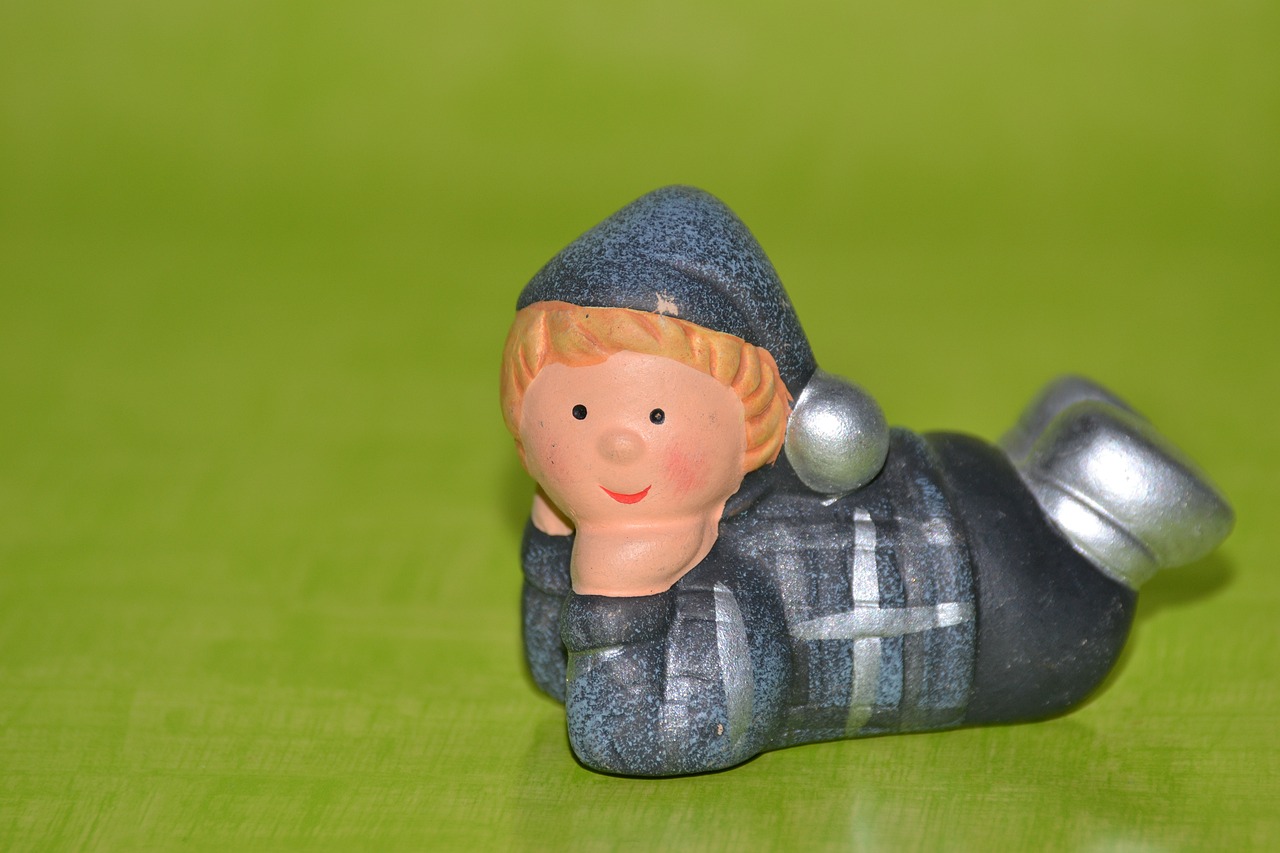
The Historical Significance of Ceramics
Ceramics have played a vital role in human civilization for thousands of years, serving as both functional objects and artistic expressions. From the earliest days of humanity, when our ancestors first shaped clay into rudimentary forms, ceramics have been a part of our daily lives. Imagine a time when there were no metal pots or plastic containers—just the earth and the creativity of early humans. This ancient art form has not only survived the test of time but has also evolved, influencing cultures and societies across the globe.
Historically, the development of ceramics can be traced back to various regions, each contributing unique styles and techniques. For instance, the Chinese porcelain, known for its delicate beauty and durability, emerged around the Tang Dynasty (618-907 AD) and became a symbol of wealth and sophistication. Similarly, the Majolica pottery of Italy, characterized by its vibrant colors and intricate designs, tells a story of cultural exchange and artistic innovation during the Renaissance. These examples highlight how ceramics are not merely objects; they are vessels of history, culture, and identity.
Throughout different eras, ceramics have served multiple purposes, including:
- Functional Use: From cooking and storage to serving food, ceramics have been essential in everyday life.
- Artistic Expression: Many cultures have used ceramics as a medium for artistic expression, showcasing their values, beliefs, and aesthetics.
- Ritualistic Significance: In various traditions, ceramics have been used in rituals and ceremonies, symbolizing life, death, and rebirth.
The impact of ceramics extends beyond mere utility. They have been a source of cultural pride and identity for many communities. For example, Native American pottery often features intricate designs that tell stories of their heritage, beliefs, and connection to the earth. These pieces are not just objects; they embody the spirit and history of the people who create them.
Furthermore, the advent of technology has transformed ceramic production, leading to the creation of new materials and methods. The introduction of electric kilns and advanced glazing techniques has expanded the possibilities for artists, allowing for greater creativity and experimentation. However, despite these advancements, traditional methods remain highly valued, as they connect us to our ancestors and remind us of the rich tapestry of human history.
In conclusion, ceramics are more than just clay shaped into form; they are a testament to human ingenuity, creativity, and cultural significance. As we explore the evolution of ceramics, we uncover not only the artistry involved but also the stories embedded in each piece, reflecting the diverse experiences and traditions of people around the world.

Techniques in Ceramic Art
Ceramic art is a fascinating blend of science and creativity, where the magic truly happens in the hands of the artist. From the moment a lump of clay is transformed into a stunning piece of art, countless techniques come into play, each contributing to the unique character of the final product. Whether you’re a budding artist or a seasoned pro, understanding these techniques can unlock new levels of creativity and expression. Let’s dive into some of the most prominent methods that make ceramic art so compelling.
At the heart of ceramic creation are two primary methods: hand-building and wheel-throwing. Each technique has its own charm and offers different avenues for artistic expression. Hand-building techniques, such as pinch pots and coil construction, allow artists to manipulate clay without the assistance of a wheel. This hands-on approach is not only accessible to beginners but also encourages a personal connection with the material. On the other hand, wheel-throwing is a more technical skill, producing symmetrical and refined pieces that showcase the artist's mastery over the craft.
When it comes to hand-building, the techniques are as varied as the artists who use them. The pinch pot technique, one of the oldest methods, involves simply pinching and shaping the clay into form. This technique is incredibly liberating; it allows for spontaneous creativity and can be a great starting point for anyone looking to explore ceramics. Imagine molding the clay with your fingers, feeling its coolness and malleability, and crafting something that is uniquely yours.
The pinch pot technique is not just about creating functional vessels; it’s about the experience of creation itself. This method can be likened to sculpting with your hands, where each pot tells a story of its own. Whether you’re crafting a small bowl or a decorative piece, the pinch pot offers a canvas for personal expression. It’s a technique that celebrates imperfection, where every dent and groove adds character and individuality to the piece.
Moving on to coil construction, this method allows for larger and more intricate forms. By rolling out long strands of clay and stacking them, artists can create everything from simple pots to elaborate sculptures. This technique is akin to building with LEGO bricks; you can add layers, create shapes, and let your imagination run wild. Historically, coil construction has roots in various cultures, reflecting the artistic traditions and practical needs of different communities.
Now, let’s shift gears to wheel-throwing, a technique that many enthusiasts aspire to master. This method involves using a potter’s wheel to spin the clay, allowing artists to shape it into perfectly symmetrical forms. It’s a dance of hand and wheel, where timing and touch are crucial. As the wheel spins, the clay responds to the artist’s hands, creating bowls, vases, and other forms with elegance and precision. The thrill of watching a shapeless lump of clay transform into a beautiful piece is nothing short of exhilarating.
Each technique in ceramic art serves as a testament to the artist's skill and vision. Whether you prefer the intimate touch of hand-building or the rhythmic motion of wheel-throwing, the world of ceramics offers endless possibilities for creativity. So, pick up some clay, let your imagination soar, and explore the captivating techniques that make ceramics such a beloved art form.
- What is the best clay for beginners? - Earthenware clay is often recommended for beginners due to its workability and low firing temperature.
- How long does it take to learn ceramic techniques? - The learning curve varies, but with regular practice, many beginners can create basic pieces within a few weeks.
- Can I use regular paint on ceramics? - No, regular paint is not suitable for ceramics. Special ceramic glazes and paints are required to ensure durability and safety.
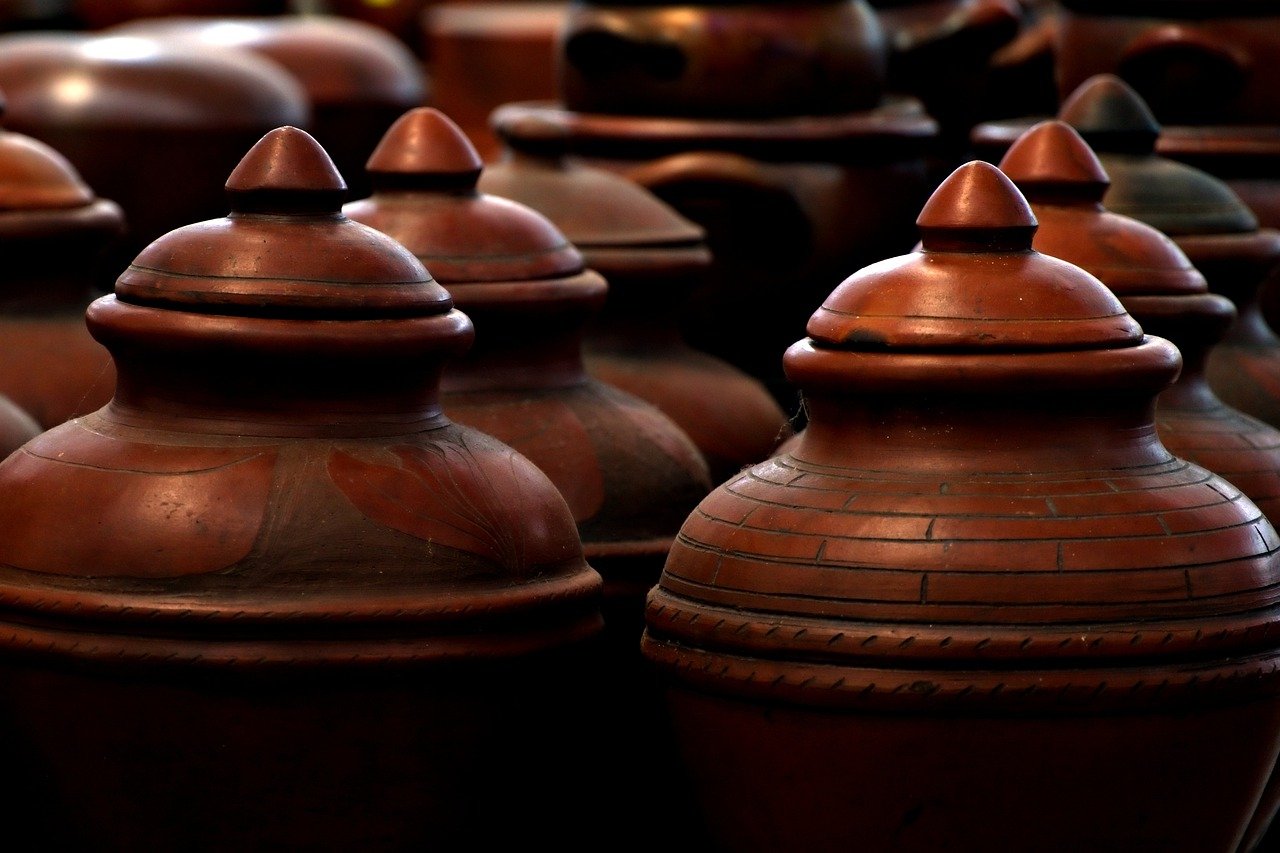
Traditional Hand-Building Methods
When it comes to ceramics, are like the roots of a tree, grounding the art form in history while allowing it to flourish in creativity. These techniques, which include pinch pots and coil construction, provide a unique avenue for personal expression, making them particularly appealing to both novices and experienced artists. Each method embodies a tactile connection between the artist and the clay, transforming raw material into something beautiful and meaningful.
The pinch pot technique is one of the oldest forms of ceramic crafting, dating back to ancient civilizations. Imagine rolling a ball of clay in your hands, gently squeezing and pinching it to create a vessel. This method is not only simple but also incredibly liberating. It allows artists to tap into their intuition and spontaneity, crafting pieces that reflect their individual style. The beauty of pinch pots lies in their imperfections; each one is unique, showcasing the artist's touch. This technique is especially popular in educational settings, as it encourages creativity without the intimidation of complex tools.
On the other hand, coil construction is a method that enables artists to create larger and more intricate forms. By rolling out long ropes of clay and stacking them layer by layer, artists can build pots, sculptures, and other forms that are both functional and artistic. This technique has deep historical roots, with evidence of its use in various cultures around the world, from ancient Native American pottery to African ceramics. The beauty of coil construction lies in its versatility; it allows for both structural strength and intricate detailing, making it a favorite among contemporary artists who wish to explore their creativity.
Both techniques serve as a bridge to the past, connecting modern artists with the rich traditions of ceramic making. They embody the essence of craftsmanship, where the hands of the artist play a crucial role in shaping the final piece. In a world increasingly dominated by technology, the tactile nature of hand-building offers a refreshing reminder of the human touch in art. Whether it's the simplicity of a pinch pot or the complexity of a coil-built sculpture, traditional hand-building methods continue to inspire and captivate ceramic artists today.
- What is hand-building in ceramics? Hand-building is a technique of shaping clay into forms using only hands and simple tools, without the use of a potter's wheel.
- What are the most common hand-building techniques? The most common hand-building techniques include pinch pots, coil construction, and slab building.
- Can beginners learn hand-building techniques easily? Yes, hand-building techniques are often recommended for beginners because they are intuitive and do not require specialized equipment.
- How do traditional hand-building methods influence modern ceramics? Traditional hand-building methods influence modern ceramics by inspiring contemporary artists to experiment with historical techniques while adding their unique twist.

Pinch Pot Technique
The stands as one of the oldest and most fundamental methods in the world of ceramics. With origins tracing back to ancient cultures, this technique is not only a gateway for beginners but also a canvas for seasoned artists to express their creativity. At its core, the pinch pot method involves taking a ball of clay and using your fingers to shape it into a vessel. It’s a tactile experience, allowing the artist to feel the material and directly influence its form with their hands. This hands-on approach fosters a unique bond between the creator and the creation, resulting in pieces that are often rich in character and individuality.
What makes pinch pots so fascinating is their versatility. Artists can create everything from simple bowls to intricate sculptures, all while maintaining a personal touch. The process begins with a lump of clay, which is then pressed and pinched into shape. This method encourages experimentation, as each pot can tell a different story based on how the artist chooses to manipulate the clay. For instance, you might create a small pinch pot for holding jewelry or a larger decorative piece that showcases your artistic flair. The possibilities are endless!
Moreover, the pinch pot technique is not just about making functional items; it also serves as a form of artistic expression. Many contemporary artists have adopted this age-old method to create modern art pieces that challenge traditional notions of ceramics. By adding textures, colors, and unique shapes, they breathe new life into the pinch pot technique. This evolution highlights how ancient methods can still resonate in today’s art world, bridging the gap between history and modernity.
In addition to its artistic merits, the pinch pot technique also holds educational value. It is often one of the first techniques taught in pottery classes because it requires minimal tools and can be easily mastered. This accessibility makes it an ideal starting point for anyone interested in exploring the world of ceramics. As students pinch and mold the clay, they learn about form, balance, and the importance of craftsmanship. It’s a journey that not only hones their skills but also ignites a passion for the art of pottery.
In summary, the pinch pot technique is a beautiful blend of simplicity and sophistication. It invites artists of all skill levels to engage with clay in a personal and meaningful way. Whether you’re crafting a functional piece or a work of art, pinch pots embody the spirit of creativity and the timeless appeal of ceramics.
- What materials do I need to start pinch pot making? You will need clay, a small bowl of water, and some basic tools like a sponge or a knife for trimming.
- Can pinch pots be used for food? Yes, as long as the clay is food-safe and properly fired, pinch pots can be functional serving dishes.
- How do I decorate my pinch pots? You can use underglazes, glazes, or even natural materials to add texture and color to your creations.
- Is the pinch pot technique suitable for children? Absolutely! It’s a fun and safe way for children to explore their creativity with clay.
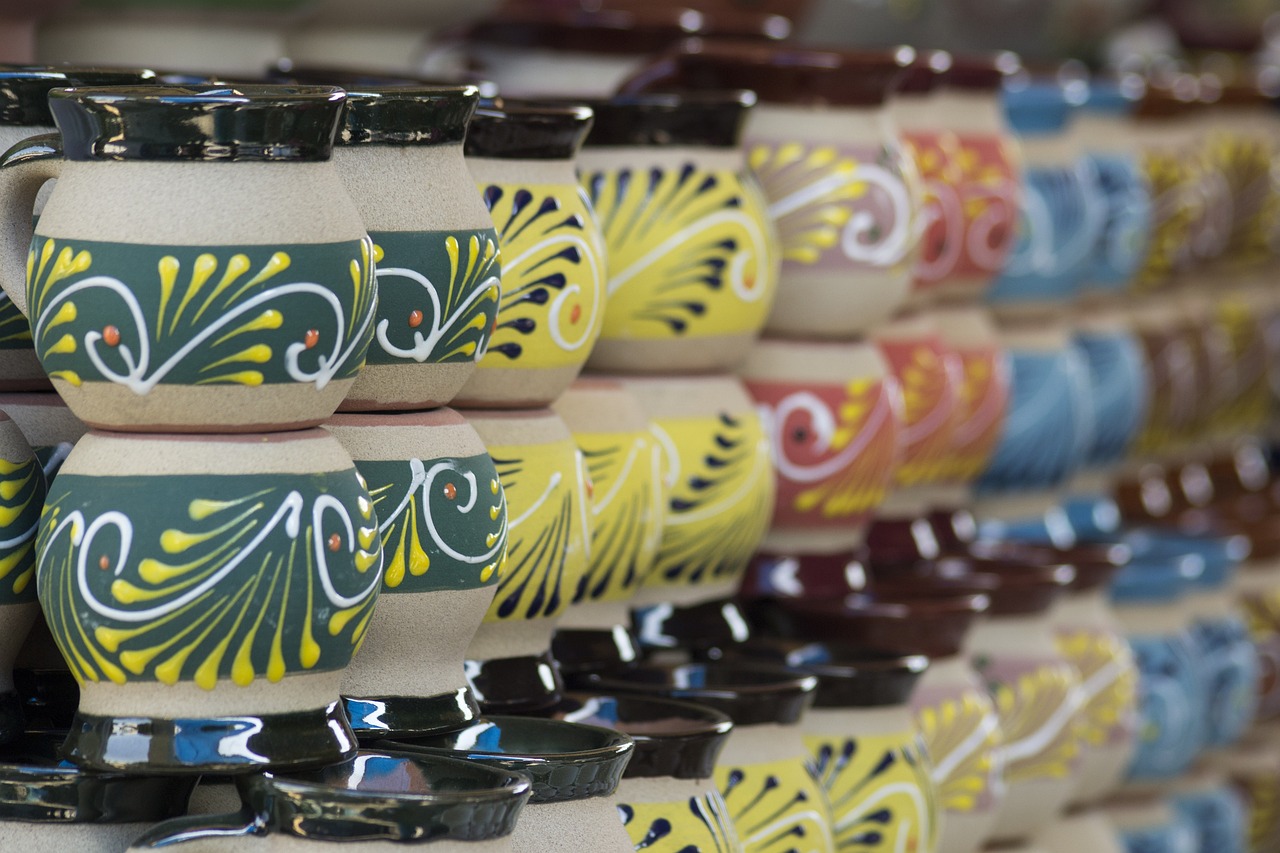
Coil Construction
Coil construction is a fascinating technique that allows artists to create larger and more intricate ceramic forms. This method involves rolling out long, snake-like coils of clay, which can be stacked and blended together to form a cohesive piece. Think of it like building a clay tower, where each layer adds height, complexity, and character to the final sculpture. The beauty of coil construction lies not only in its versatility but also in the personal touch it allows; every coil can be shaped differently, leading to unique textures and designs that reflect the artist's individual style.
Historically, coil construction has roots in various cultures around the world, from ancient Native American pottery to African earthenware. Each culture has adapted the technique to suit its own aesthetic and functional needs. For instance, in some African traditions, coils are used to create ceremonial vessels that are not just beautiful but also serve a significant cultural purpose. This technique is a testament to the adaptability of ceramics, showcasing how artists can manipulate a simple material to convey deep cultural narratives.
One of the key advantages of coil construction is how it encourages creativity and experimentation. Artists can play with different coil sizes and shapes, allowing for a wide range of artistic expressions. Additionally, this method is often more forgiving for beginners, as it doesn't require the precision of wheel-throwing. Instead, it invites a more organic approach, making it accessible to anyone eager to explore the world of ceramics. The process can be meditative, as the repetitive action of rolling and stacking coils can draw the artist into a state of flow, fostering a deeper connection with their work.
Moreover, coil construction is not limited to traditional forms. Modern artists have taken this ancient technique and infused it with contemporary styles and ideas, creating pieces that challenge conventional notions of ceramics. For instance, some artists incorporate mixed media, combining clay with other materials like metal or glass, to push the boundaries of what ceramic art can be. This fusion of old and new exemplifies the ongoing evolution of ceramics, where the past informs the present, and innovation is always on the horizon.
In conclusion, coil construction is more than just a method of creating pottery; it's a dynamic practice that embodies the spirit of creativity and cultural heritage. Whether you're a seasoned ceramicist or a curious beginner, exploring coil construction can open up a world of possibilities, allowing you to express your unique voice through this timeless art form.
- What is coil construction in ceramics?
Coil construction is a technique where long coils of clay are rolled and stacked to create larger ceramic forms. - Is coil construction suitable for beginners?
Yes, coil construction is often more forgiving than other techniques, making it accessible for beginners. - Can coil construction be combined with other techniques?
Absolutely! Many contemporary artists blend coil construction with wheel-throwing and other methods to create unique pieces. - What cultures have historically used coil construction?
Many cultures, including Native American and African traditions, have utilized coil construction to create functional and ceremonial pottery.
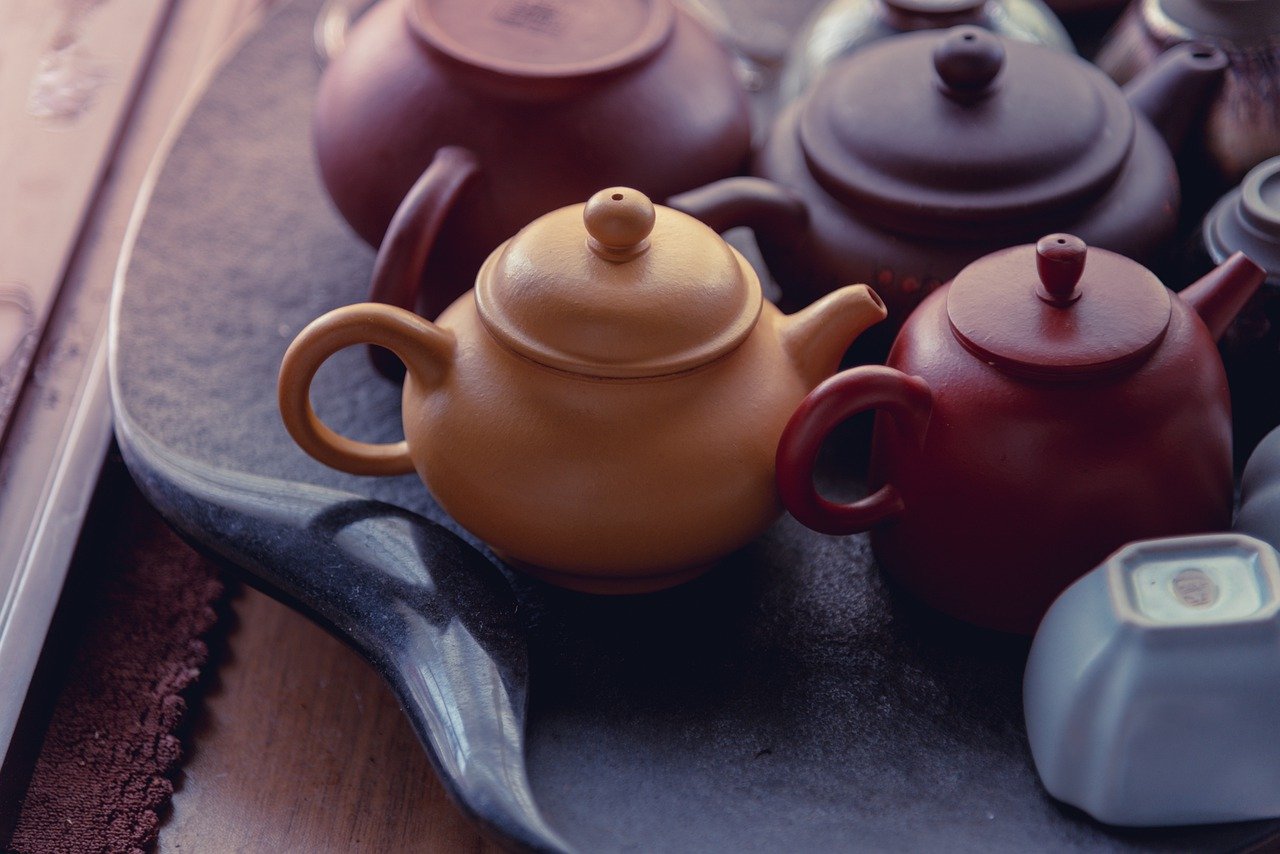
Wheel-Throwing Techniques
Wheel-throwing is not just a technique; it's an art form that marries skill, precision, and creativity. Imagine a potter's wheel spinning, clay transforming under the hands of an artist, each rotation revealing the potential of a simple lump of earth. This age-old method has been a cornerstone of ceramic artistry for centuries, producing everything from functional items like bowls and mugs to stunning decorative pieces that captivate the eye. The beauty of wheel-throwing lies in its ability to create symmetrical forms that are both aesthetically pleasing and practical.
The process begins with the potter centering a ball of clay on the wheel. This step is crucial; if the clay isn't centered properly, the final piece will be uneven and flawed. Once centered, the potter applies pressure with their hands, gradually shaping the clay as the wheel spins. It's a dance of sorts, where the potter must be in tune with the rhythm of the wheel, adjusting their technique as the clay responds to their touch. This requires not only physical skill but also a deep understanding of the material itself.
One of the most fascinating aspects of wheel-throwing is the variety of forms that can be created. From delicate porcelain cups to robust stoneware vases, the possibilities are endless. The potter can choose to alter the shape, size, and thickness of the piece, allowing for a wide range of artistic expression. Additionally, once a piece is thrown, it can be further enhanced with various techniques, such as carving, glazing, or adding decorative elements.
To give you a clearer picture of what goes into wheel-throwing, here’s a quick overview of the main steps involved:
- Preparation: Selecting and wedging the clay to eliminate air bubbles.
- Centering: Placing the clay on the wheel and centering it for even shaping.
- Shaping: Using hands and tools to form the desired shape.
- Trimming: Once the piece has dried to a leather-hard state, it can be trimmed for refinement.
- Firing: The piece is fired in a kiln to harden it and enhance its durability.
What makes wheel-throwing particularly engaging is the blend of tradition and innovation. While many potters adhere to classical techniques, others experiment with contemporary styles, merging old-world craftsmanship with modern aesthetics. This fusion not only breathes new life into the art form but also allows for a dialogue between past and present, showcasing how ceramics can evolve while honoring their roots.
Moreover, wheel-throwing is not just limited to individual artists. Community studios and workshops have sprung up, inviting enthusiasts of all skill levels to try their hand at this captivating practice. These spaces foster collaboration and creativity, allowing people to share techniques, ideas, and inspirations. It's not just about making pottery; it's about building a community that appreciates the beauty and significance of ceramics.
In summary, wheel-throwing is a dynamic and enriching technique that encapsulates the essence of ceramic art. It's a process that requires patience, practice, and passion, but the rewards are immense. The tactile experience of shaping clay, the joy of creating something beautiful, and the ability to connect with a rich tradition make wheel-throwing a timeless pursuit that continues to inspire artists and enthusiasts alike.
Q: What materials are typically used in wheel-throwing?
A: The most common materials include stoneware, porcelain, and earthenware clay. Each type has its unique properties and firing temperatures.
Q: Do I need prior experience to try wheel-throwing?
A: Not at all! Many studios offer beginner classes that provide hands-on instruction. It's a great way to learn the basics!
Q: How long does it take to create a piece using wheel-throwing?
A: The time can vary widely depending on the complexity of the piece. A simple bowl might take an hour, while more intricate designs could take several hours over multiple sessions.
Q: Can I decorate my wheel-thrown pieces?
A: Absolutely! After throwing, you can apply glazes, paints, or carvings to add personal flair and character to your creations.

The Cultural Impact of Ceramics
Ceramics are not just beautiful objects; they are a vibrant reflection of cultural identity and heritage. Across the globe, different cultures have utilized ceramics to express their unique stories, traditions, and values. Have you ever wondered how a simple clay pot can carry the weight of history? Each piece tells a tale, often rich with symbolism and meaning. From ancient civilizations to modern artisans, ceramics have served as a medium for cultural expression and preservation, making them an integral part of human experience.
Think about it: every time you hold a ceramic mug or admire a decorative plate, you're engaging with a piece of history. Ceramics have been used in rituals, celebrations, and daily life, showcasing the craftsmanship and creativity of their makers. For instance, in many Indigenous cultures, pottery is not merely functional; it is often adorned with intricate designs that convey spiritual beliefs or historical narratives. These designs can include:
- Geometric patterns that represent natural elements.
- Animal motifs that signify strength or community.
- Symbolic colors that hold cultural significance.
Moreover, ceramics can serve as a bridge between generations. In many cultures, traditional pottery techniques are passed down from parent to child, ensuring that the knowledge and artistry remain alive. This mentorship not only preserves techniques but also fosters a sense of community and continuity. As these artisans create, they are not just making objects; they are weaving the fabric of their culture, connecting the past with the present.
In contemporary society, we see a fascinating blend of traditional and modern interpretations in ceramic art. Artists are increasingly drawing inspiration from historical techniques while infusing their work with contemporary themes. This evolution allows ceramics to remain relevant, adapting to changing cultural landscapes while still honoring their origins. For example, some modern ceramicists incorporate eco-friendly materials and innovative glazing techniques, reflecting today's environmental consciousness. These practices not only highlight the versatility of ceramics but also emphasize their role in addressing current societal issues.
Furthermore, ceramics have a unique ability to foster dialogue among cultures. Art exhibitions featuring ceramics from different regions encourage appreciation and understanding of diverse traditions. When people engage with ceramic art, they are often invited to explore the stories behind each piece, creating a deeper connection with the culture it represents. This cultural exchange enriches our global community, reminding us of our shared humanity.
In summary, the cultural impact of ceramics is profound and multifaceted. They are more than mere objects; they are vessels of history, identity, and innovation. As we continue to explore and celebrate the art of ceramics, we also embrace the stories they tell and the connections they foster across time and space.
| Question | Answer |
|---|---|
| What are some common symbols found in ceramic designs? | Common symbols include geometric patterns, animal motifs, and colors that represent cultural beliefs. |
| How do modern artists reinterpret traditional ceramics? | Modern artists often blend traditional techniques with contemporary themes and eco-friendly practices. |
| Why are ceramics important for cultural preservation? | Ceramics preserve techniques and stories that connect generations, ensuring cultural heritage is maintained. |

Symbolism in Ceramic Designs
Ceramics are not just beautiful objects; they are vessels of cultural stories and symbolism. Throughout history, artisans have imbued their creations with meanings that resonate deeply within their communities. For many cultures, the designs on ceramic pieces are more than mere decoration; they are a reflection of beliefs, traditions, and the natural world. Think of it as a visual language where each pattern and color tells a story, much like a book without words.
In various cultures, specific symbols have been passed down through generations, each carrying its own significance. For example, in many Indigenous cultures, the use of animal motifs in ceramic designs often represents spiritual beliefs or serves as a reminder of the connection between humans and nature. Similarly, in Asian ceramics, you might find intricate floral patterns symbolizing growth and renewal, while geometric shapes may denote harmony and balance. The beauty of these symbols lies in their ability to transcend time and communicate universal themes that resonate with people across the globe.
But what makes these symbols so powerful? It's their ability to evoke emotions and provoke thought. When you gaze at a beautifully crafted ceramic piece adorned with a specific design, you may feel a connection to the artist's heritage or even a sense of nostalgia for a culture you may not be a part of. This emotional connection is what elevates ceramics from mere objects to artistic expressions that encapsulate human experience.
To illustrate the variety of symbols found in ceramic designs, consider the following table that highlights some common motifs and their meanings across different cultures:
| Culture | Symbol | Meaning |
|---|---|---|
| Native American | Animal Motifs | Spiritual connection and respect for nature |
| Chinese | Dragons | Strength, power, and good fortune |
| Japanese | Cherry Blossoms | Beauty and the transient nature of life |
| Mexican | Colorful Patterns | Cultural identity and celebration of heritage |
In contemporary ceramics, artists often draw inspiration from traditional symbols, reinterpreting them in innovative ways. This fusion of old and new not only preserves cultural heritage but also invites dialogue about identity and modernity. For instance, a potter might incorporate ancient Greek motifs into a minimalist design, creating a juxtaposition that speaks to both history and contemporary aesthetics. This practice highlights the dynamic nature of ceramics as an evolving art form, continuously shaped by the cultural contexts in which they exist.
Ultimately, the symbolism found in ceramic designs serves as a reminder of our shared human experience. Each piece is a conversation starter, a bridge connecting us to the past while inviting us to reflect on our present and future. So, the next time you admire a ceramic piece, take a moment to ponder the stories it may hold and the cultural significance behind its designs. After all, ceramics are more than just objects; they are a testament to our creativity, resilience, and the beauty of human expression.
- What is the significance of symbols in ceramics?
Symbols in ceramics convey cultural beliefs, traditions, and stories, allowing artists to express their heritage and connect with viewers on an emotional level.
- How do modern artists incorporate traditional symbols?
Many contemporary artists reinterpret traditional symbols by blending them with modern techniques and designs, creating a dialogue between the past and present.
- Can the symbolism of ceramics vary between cultures?
Absolutely! Each culture has its own set of symbols with unique meanings, reflecting their values, beliefs, and experiences.
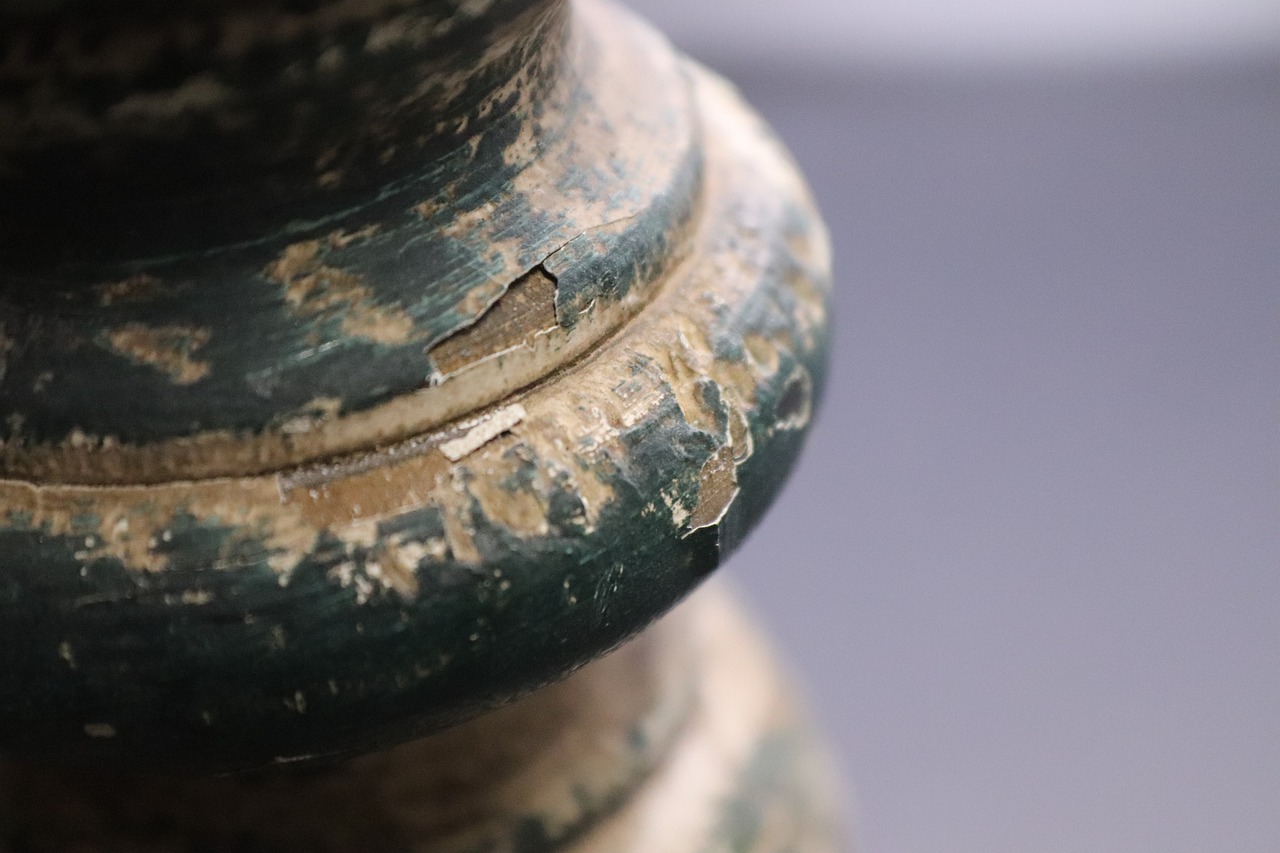
Modern Interpretations of Traditional Ceramics
In the ever-evolving world of art, ceramics stands out as a medium that beautifully marries the old with the new. Contemporary artists are increasingly drawing inspiration from traditional techniques and styles, breathing new life into age-old practices. This fusion not only honors the rich history of ceramics but also pushes the boundaries of creativity, allowing for innovative expressions that resonate with today's audience.
One of the most fascinating aspects of modern ceramic art is how artists reinterpret traditional forms. For instance, while a traditional Japanese tea bowl (or chawan) might be crafted with the utmost precision and simplicity, a modern artist may choose to distort its shape or add unexpected textures and colors. This approach challenges our perceptions of what ceramics can be, transforming functional objects into thought-provoking pieces of art.
Moreover, many contemporary ceramicists are experimenting with mixed media, incorporating materials like glass, metal, and even organic elements into their work. This blending of materials not only enhances the visual appeal but also creates a dialogue between different artistic disciplines. Imagine a ceramic vase adorned with metal accents or a sculpture that combines clay and wood—these pieces tell stories that transcend their individual components.
Another exciting trend is the use of modern technology in ceramic creation. Artists are now utilizing digital tools, such as 3D printing, to design and produce complex forms that were once unimaginable. This technology allows for greater precision and experimentation, enabling artists to create intricate patterns and structures that challenge traditional notions of craftsmanship. However, the essence of handmade ceramics remains cherished, with many artists finding a way to blend technology with traditional hand-building techniques.
Furthermore, the cultural significance of ceramics is still very much alive in contemporary practices. Many artists are using their work to comment on social issues, environmental concerns, and cultural identity. For example, ceramics can serve as a medium for activism, where artists create pieces that address themes like sustainability or cultural appropriation. By doing so, they not only preserve traditional methods but also ensure that these practices remain relevant in today’s world.
As we delve deeper into the world of modern ceramics, it becomes clear that the interpretations of traditional techniques are as diverse as the artists themselves. Each piece is a reflection of the artist's personal journey, cultural background, and innovative spirit. The result is a vibrant tapestry of ceramic art that not only pays homage to the past but also paves the way for future generations of artists.
- What are the main differences between traditional and modern ceramics?
Traditional ceramics often adhere to established techniques and styles, while modern ceramics embrace innovation and experimentation, frequently incorporating mixed media and technology. - How do contemporary artists draw inspiration from traditional ceramics?
Artists may reinterpret traditional forms, use historical techniques, or incorporate cultural symbols into their work, creating a dialogue between past and present. - What role does technology play in modern ceramic art?
Technology, such as 3D printing, allows artists to create complex designs and experiment with new forms, enhancing the creative possibilities of ceramic art. - Can ceramics be used to address social issues?
Yes! Many contemporary ceramic artists use their work to comment on societal themes, such as sustainability and cultural identity, making ceramics a powerful medium for activism.
Frequently Asked Questions
- What is the history of ceramics?
Ceramics have a rich history that dates back thousands of years, evolving from simple clay pots to intricate artistic expressions. They have served both functional and decorative purposes across various cultures, showcasing the creativity and innovation of human civilization.
- What are the main techniques used in ceramic art?
There are several techniques in ceramic art, including hand-building methods like pinch pots and coil construction, as well as wheel-throwing techniques. Each method allows artists to express their creativity in unique ways, producing everything from simple vessels to complex sculptures.
- Can you explain the pinch pot technique?
The pinch pot technique is one of the oldest methods of creating ceramics, involving pinching and shaping clay into a desired form. It's incredibly accessible, making it a great starting point for beginners while also allowing experienced artists to explore their creativity and individuality.
- What is coil construction and its significance?
Coil construction involves rolling out long strands of clay and stacking them to create larger and more intricate forms. This technique has historical significance in many cultures, allowing for the creation of functional and artistic pieces that reflect the artist's vision and heritage.
- What is wheel-throwing, and why is it important?
Wheel-throwing is a technique that uses a potter's wheel to create symmetrical and refined ceramic pieces. It requires skill and precision, making it a respected method in ceramic artistry. This technique allows for the production of uniform shapes and is often used for functional items like bowls and vases.
- How do ceramics reflect cultural identity?
Ceramics often tell stories through their designs and forms, reflecting the cultural identity and heritage of the communities that create them. The symbols and styles used in ceramic pieces can convey deep meanings, preserving traditions and connecting generations.
- What role does symbolism play in ceramic designs?
Symbolism in ceramic designs can convey cultural significance, representing beliefs, stories, or historical events. These symbols can vary widely between cultures, making each piece a unique narrative that enriches our understanding of the community it originates from.
- How are modern ceramics influenced by traditional techniques?
Contemporary artists often reinterpret traditional ceramic techniques, blending old methods with modern aesthetics and materials. This fusion allows for innovative creations that honor the past while pushing the boundaries of what ceramics can be, bridging the gap between tradition and innovation.



















